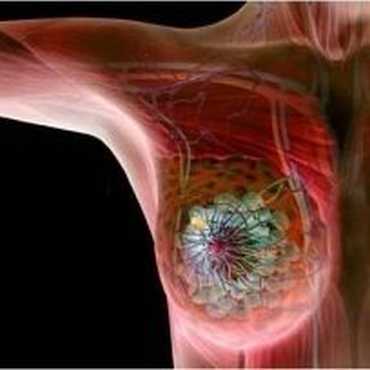ARE DEODORANTS TRULY SAFE? HOW CAN THEY BE LINKED TO BREAST CANCER!

Millions of women use brand name deodorants straight from a drug store or grocery store shelf without giving any thought to the toxic chemicals lurking within. To make matters worse, they are unwittingly applying these deodorant sticks and sprays to cleanly shaven underarms that lie adjacent to another important part of the body’s immune system – the auxiliary lymph nodes. After shaving, the open pores in the underarm, and those lymph nodes, are made even more vulnerable to chemicals embedded inside most over the counter antiperspirants and deodorants. Some of those chemicals could lead to cancer.
One particular ingredient, aluminum salts, found in many deodorants has been put to the test by Swedish researchers. As reported by Thelocalch.com, the University of Geneva researchers used rats to determine what the long term exposure of aluminum salts would do. They were actually replicating a study that had already been done with the isolated mammary cells of women. Both studies demonstrated the same result. They discovered that “long-term exposure to concentrations of aluminium caused cells to form tumours and metastasise.”
Oncology professor André-Pascal Sappino, the co-author of the study, compared the use of aluminum salts to asbestos, which is banned in the European Union and Switzerland, but not in the United States. He’s hoping that Switzerland will soon ban aluminum salts as well. Aluminum salts are also known by a few other names. As reported by Pubchem.ncbi.gov, aluminum salts can be labeled as “Aluminum chloride, Aluminum trichloride, Aluminum chloride (AlCl3), Aluminium trichloride and Trichloroaluminum; AlCl3.” Take a look at what you are spraying or rubbing under your arms. If it contains aluminum salts, or other ingredients that you can’t pronounce, toss it.
Fortunately, as more information comes to light on these chemical ingredients, more companies are developing safer alternatives. It’s becoming easier than ever to turn to safe, effective alternatives. Crystal deodorant stones contain a naturally occurring form of aluminum made up of molecules too large to be absorbed by the skin. This helps make these products effective at preventing bacteria-causing odor found in sweat from developing, rather than artificially clogging pores as antiperspirants do. . Such alternatives kill odor-causing bacteria and neutralize the smell of sweat rather than trying to stop it. (Sweat, after all, is a necessary part of our bodies’ natural cooling process.) Look for deodorants with natural antibacterial ingredients such as tea tree oil, witch hazel, baking soda, hops, sage or lemon peel.
Deodorant Ingredients to Avoid
These ingredients are used in many conventional antiperspirants.
Penetration enhancers: Ingredients such as propylene glycol and disodium EDTA are penetration enhancers, meaning they help carry active ingredients (for example, aluminum) into our bodies. These ingredients may not be bad on their own, but they can become hazardous when they help harsh ingredients absorb into our bodies faster.
Triclosan: An antibacterial also used in hand sanitizers, triclosan is a powerful endocrine disrupter and a suspected contributor to the development of certain strains of antibiotic-resistant bacteria.
Talc powder: A fine powder made from talc, a mineral made up of magnesium, silicon and oxygen, talc powder absorbs moisture and helps cut down on friction. This makes it useful for keeping skin dry and preventing rashes. Unfortunately, it is also a suspected carcinogen.
Fragrance: Among the most ubiquitous ingredients in body-care products, synthetic fragrance is a blanket term for a blend of chemicals. Phthalates, chemicals used in plastics and regularly labeled “fragrance,” have been found to accumulate in the body and have been linked to hormone disruption, possible birth defects, infertility and some cancers.
BHT: In low doses, BHT (butylated hydroxytoluene) has been linked to nervous-system effects. It also causes hyperactivity in children and is a suspected carcinogen.
According to Breastcancer.org, breast cancer is the most commonly diagnosed cancer for women, besides skin cancer. During a women’s lifetime, there is a 12% chance of invasive breast cancer. Men are also subject to breast cancer, though at lower rates. The lifetime risk for men is 1 out of 1000. Why not lower your risk by eliminating chemicals from your deodorant?
After doing your own research about deodorants, we recommend you to also have a look here.
IRENE DIAMANTOPOULOU
EFFECTIVE MARKETING OF BEAUTY PRODUCTS & SERVICES
References:
Cancer.org
TheLocal.ch
Asbestos.com
Pubchem.ncbi.nlm.nih.gov
BreastCancer.org






